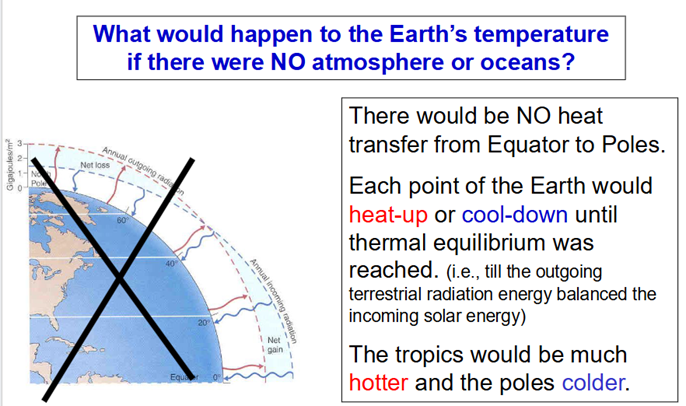Earth Systems Lecture 13
1/23
There's no tags or description
Looks like no tags are added yet.
Name | Mastery | Learn | Test | Matching | Spaced |
|---|
No study sessions yet.
24 Terms
The Salty Ocean- ion composition
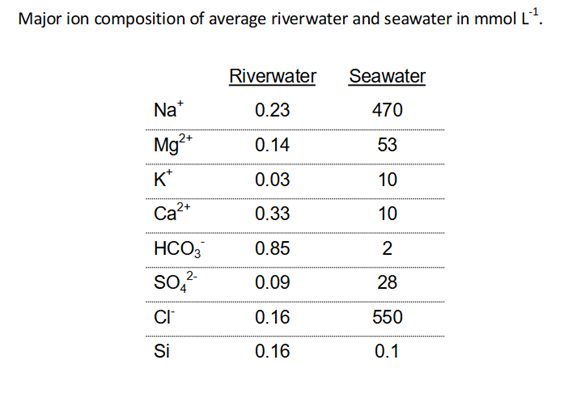
Residence times in the ocean
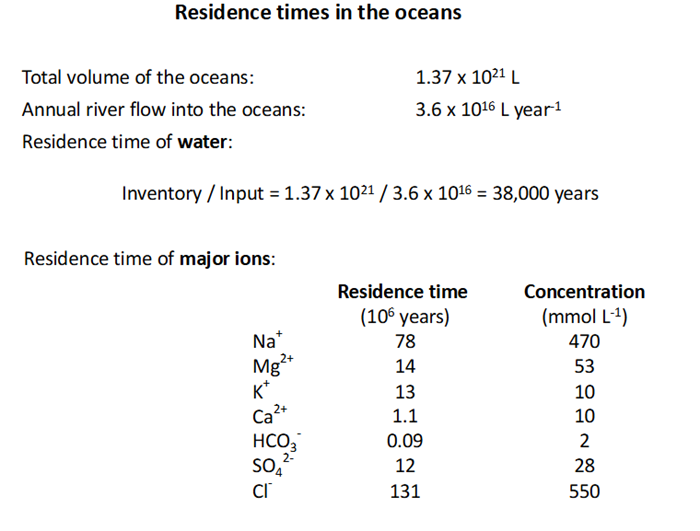
What governs concentrations of major ions in seawater?
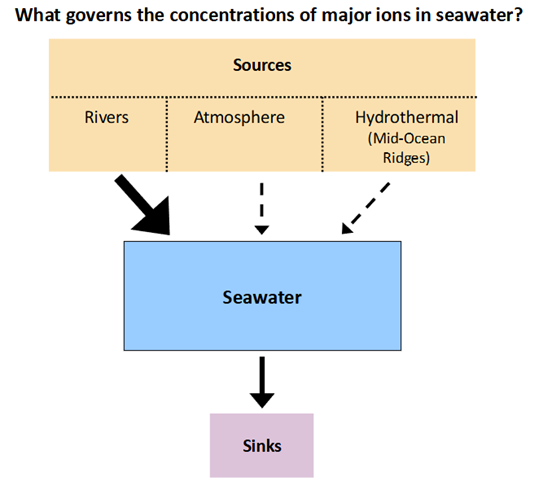
The Input of Ions from Rivers
Simplified budget for major ions in seawater. All values in 10^12 mol year^-1.
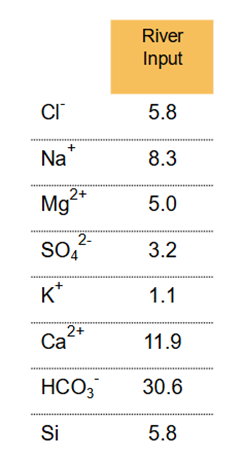
Removal Processes from the Ocean


Clay Structure
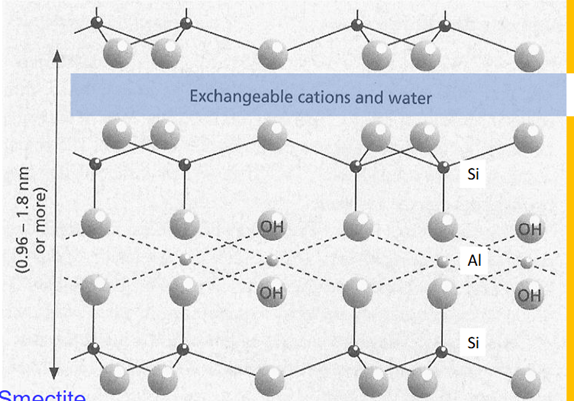

Locations of the known mid-ocean ridge hydrothermal systems in the oceans


Changes in seawater major ion composition upon reaction with mid-ocean ridge basalt at high temperature (mmol L^-1).

Biological Removal Processes in the Ocean
Coccolithoforids and Foraminifera: Lay down carbonate (CaCO3)
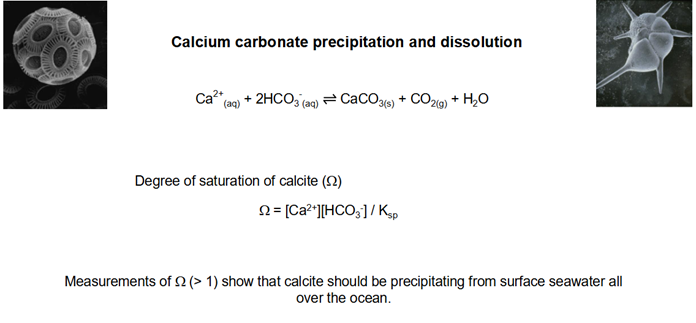
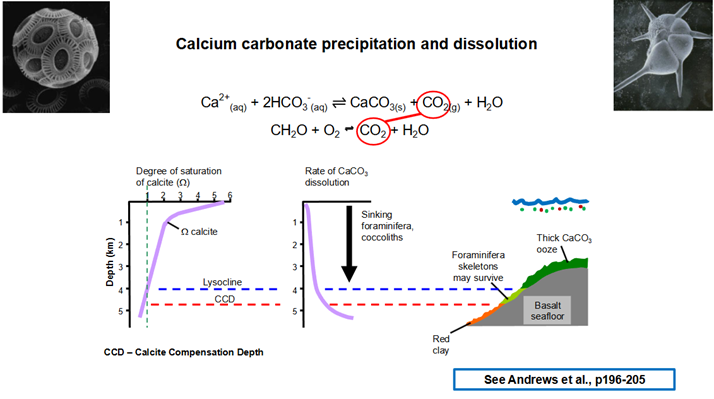
Present-day distribution of principal types of marine sediment
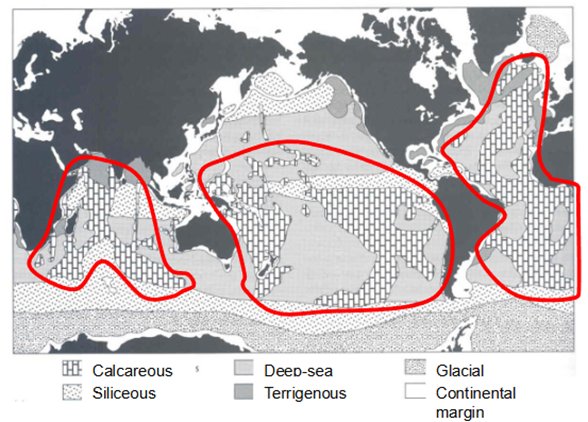

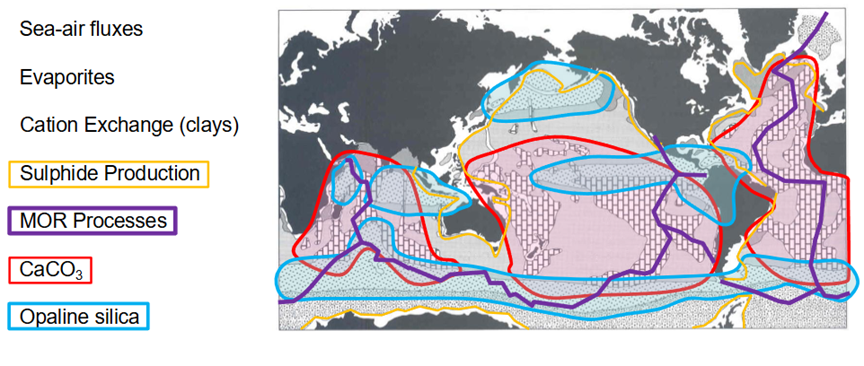
Marine Nutrients Cycles and Productivity

Nutrient availability in oceans

Influence of global ocean circulation on deep water dissolved nutrient concentrations
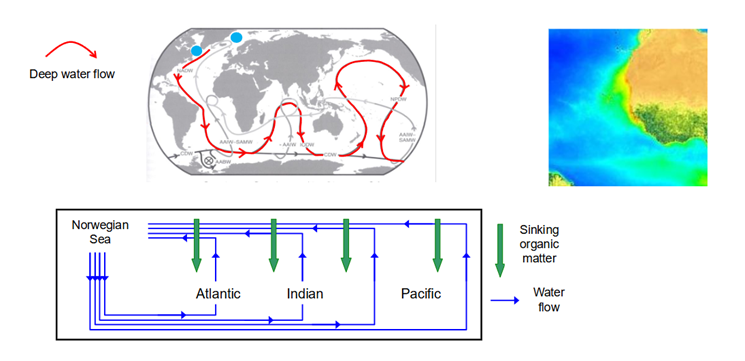
Is there a eutrophication problem in the global ocean?
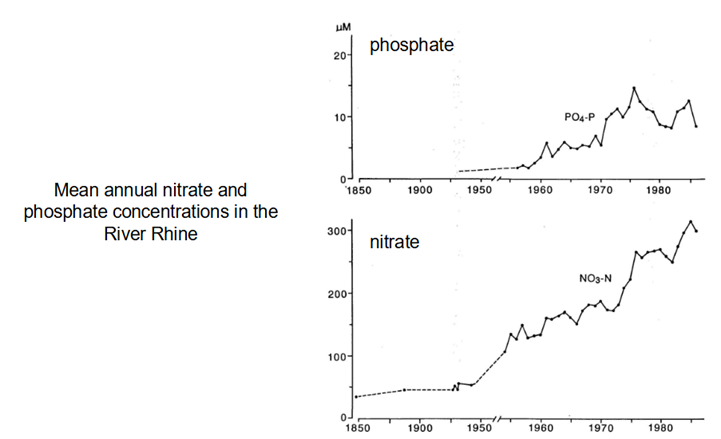
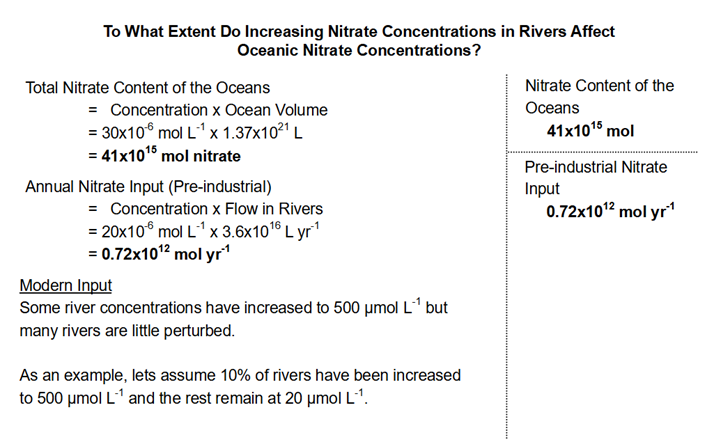

Iron as a nutrient
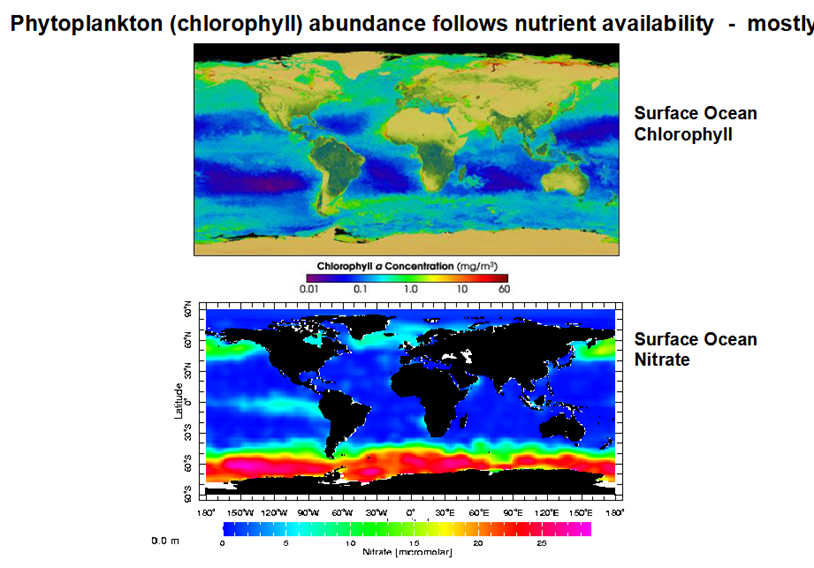
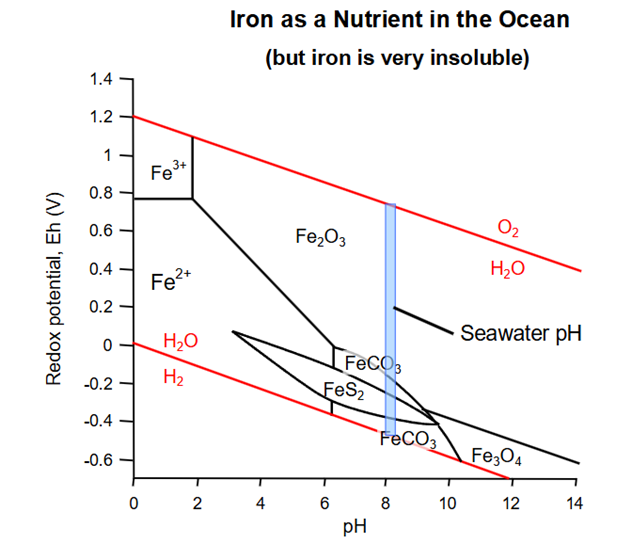
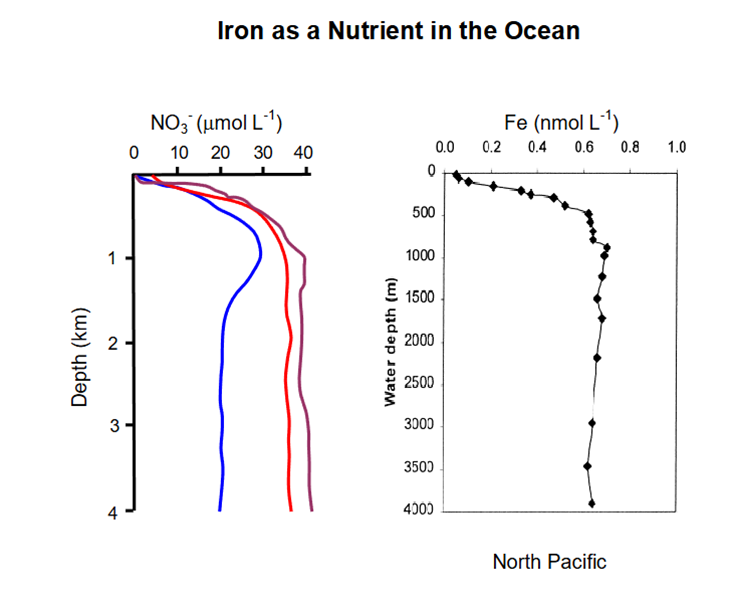
Desert Dust is a Major Source of Iron to the Remote Ocean
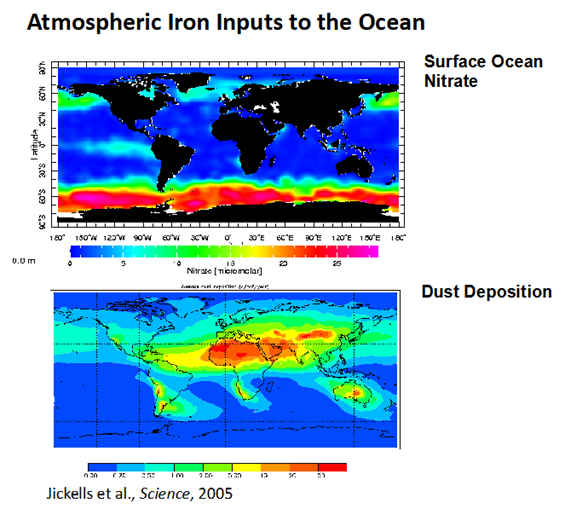
Earth’s Energy Balance- Radiation and the Earth’s Energy Budget

The Sun- Power source of the Solar System
•Distance from Earth: 1.45 x 108 km (8 light-minutes) (93 million miles)
•Diameter 1.41 x 106 km (110 x diameter of Earth)
•Age : 4.5 billion years
•Mass : 2 x 1030 kg (330,000 x mass of Earth)
•Surface temperature: 6000 K
•Core temperature: > 106 K

Structure of the sun (and composition)
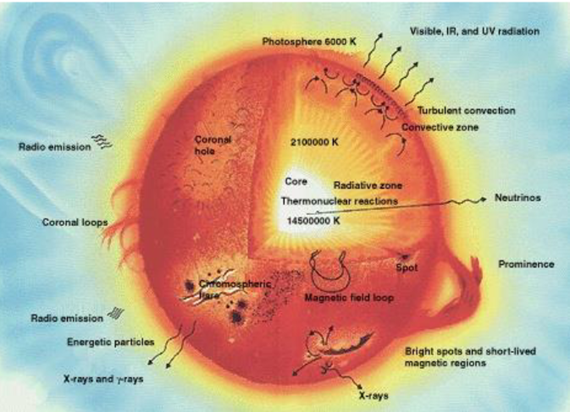
The Sun Emits:
Visible, IR, UV (electro-magnetic radiation) (Radiation in different wavelengths)
The Sun- Composition
Mostly Hydrogen, Some Helium, and a few Trace Elements

•Energy Source : Thermonuclear fusion of Hydrogen to Helium
•The Sun’s emission of electro-magnetic radiation is approximately that of a
‘black body’ with surface temperature 6000K
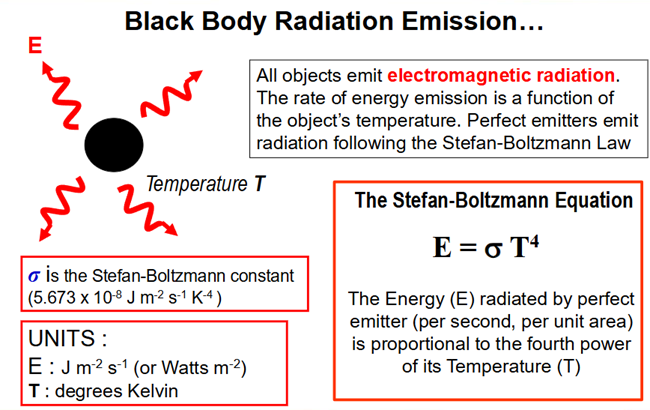
(The hotter something is, the more radiation it is emitting)
THE SUN : Power Source of the Solar System
Calculating the Rate of Energy Output of the Sun
Use E = s T4
Surface temperature: T= 6000 K
Stefan-Boltzmann constant :
σ =5.673 x 10-8 J m-2 s-1 K-4
Solar Power output per m2
E= 7.35x107 J m-2 s-1 (or W m-2)
RADIATION ENERGY EMITTED BY A BLACK BODY IS SPREAD ACROSS A RANGE OF WAVELENGTHS
This ‘energy spectrum’ is a function of the TEMPERATURE of the body
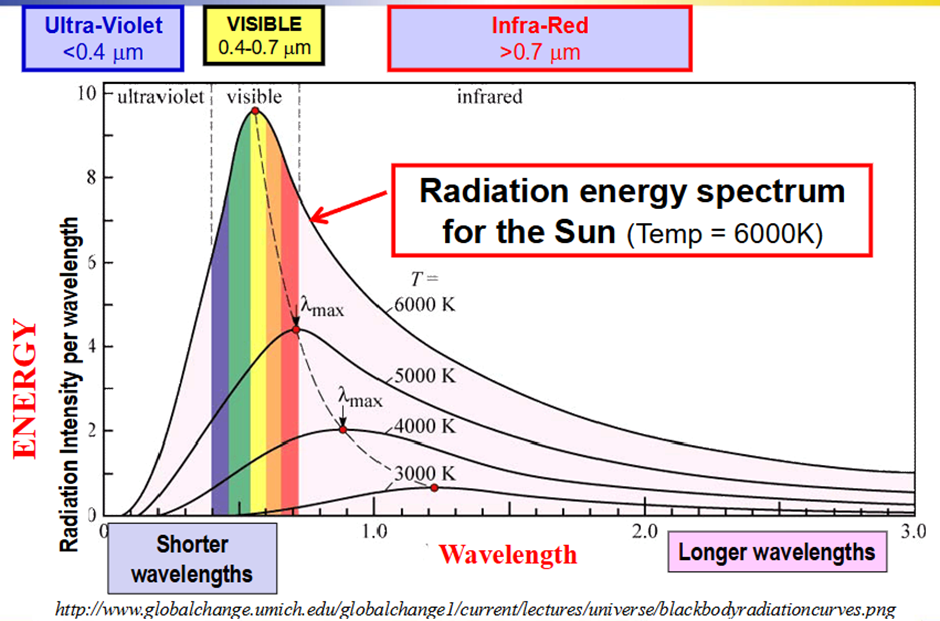
THE SUN: RADIATION ENERGY SPECTRUM
Surface temperature: 6000 K
SOLAR ENERGY DISTRIBUTION
•Visible (0.4-0.7 mm) : 43%
•Infra-Red (IR; (>0.7 mm)) : 48%
•Ultra-Violet (UV; <0.4 mm): 9%
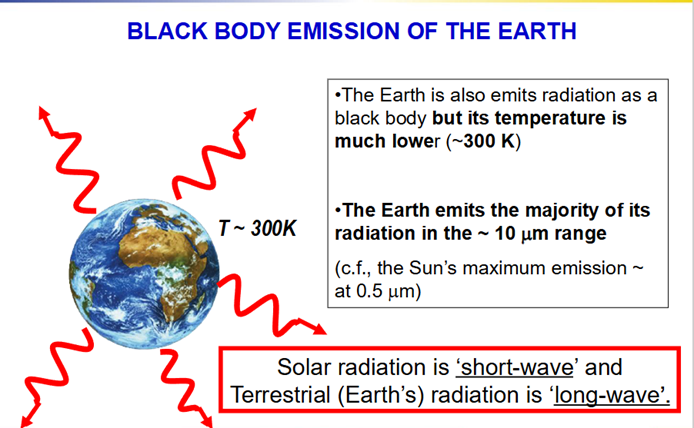

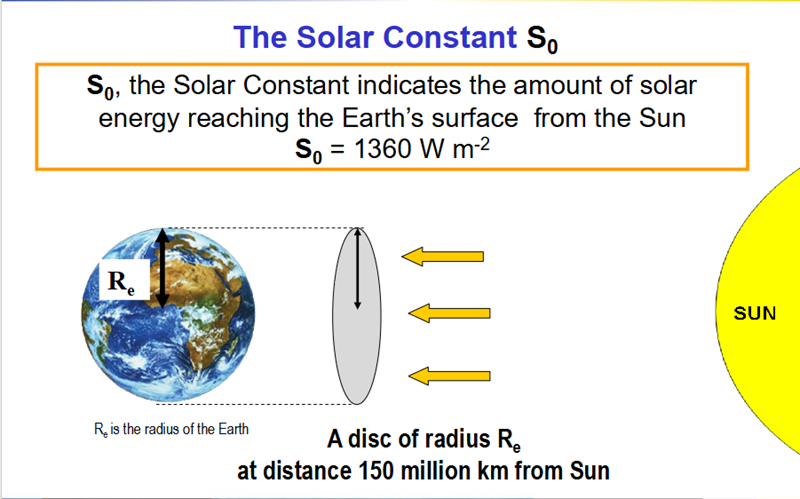
Albedo
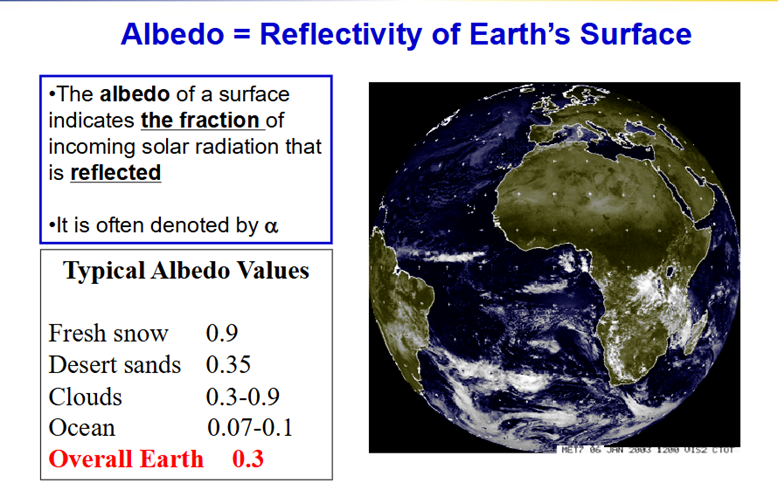
Earth’s Radiation Energy Balance
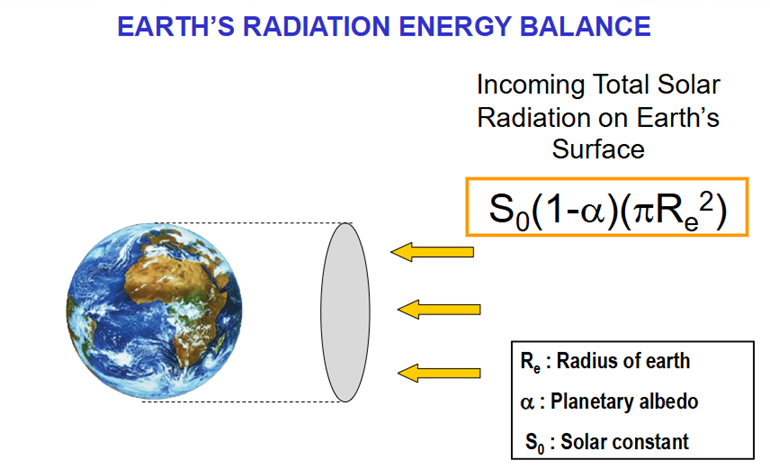

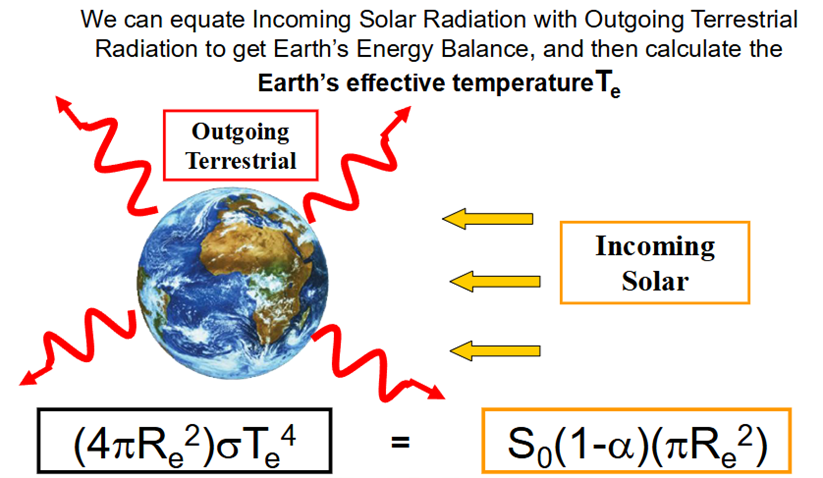
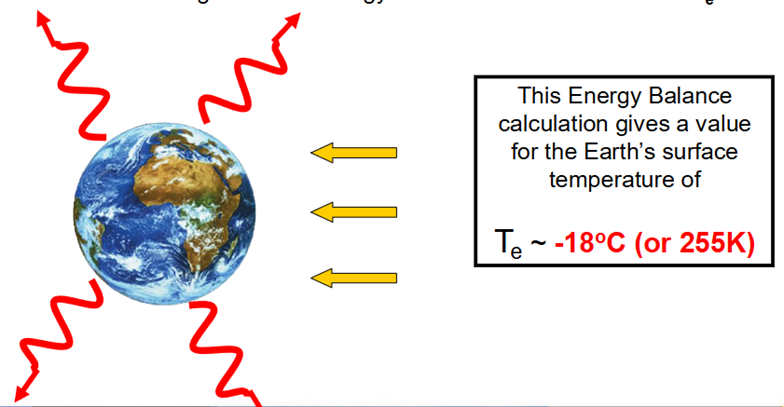

ANSWER
We need to account for absorption of radiation by atmospheric molecules
In particular, absorption of long-wave terrestrial radiation by atmospheric ‘Greenhouse Gases’
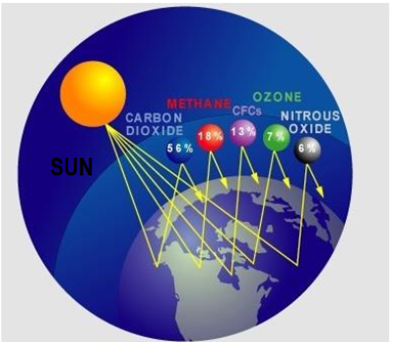
GLOBAL ENERGY BALANCE OF EARTH-ATMOSPHERE SYSTEM
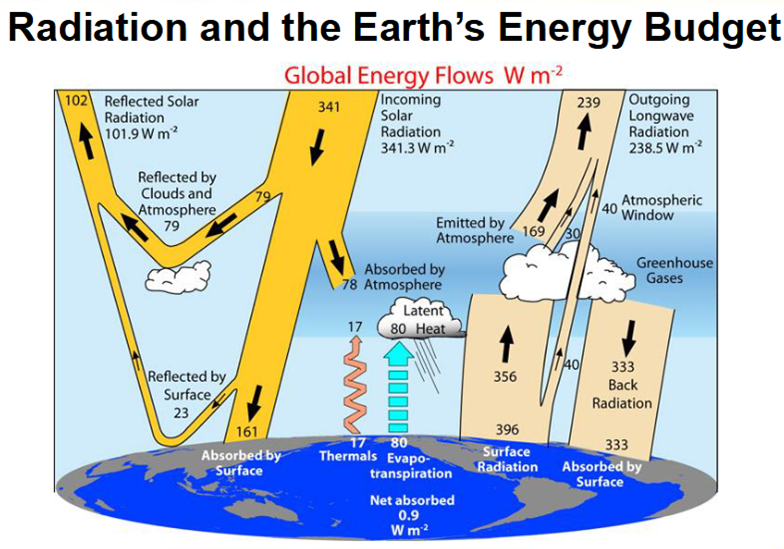

Radiation FLuxes
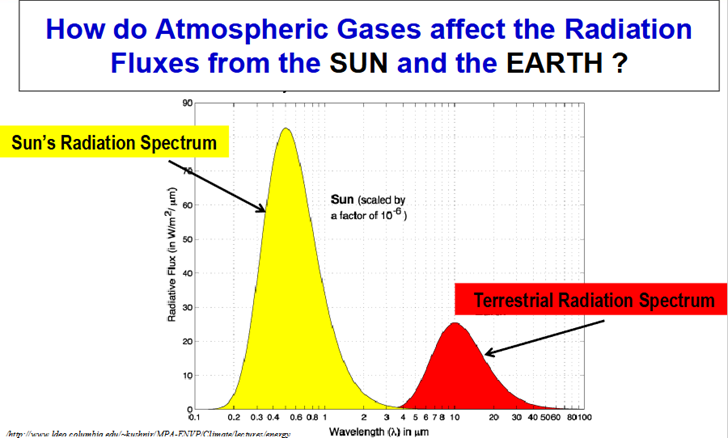
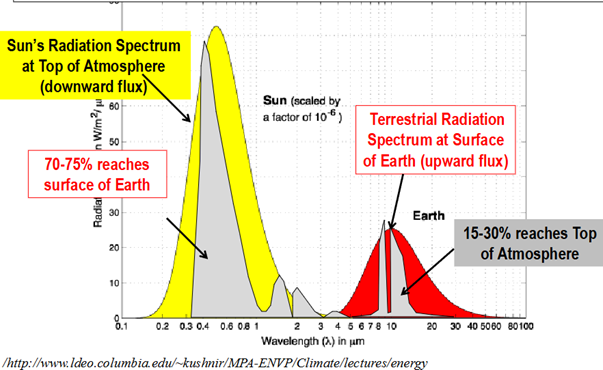
ABSORPTION BY ATMOSPHERIC GASES OF INCOMING SOLAR (SHORT-WAVE) RADIATION
•The atmosphere is relatively transparent to short-wave radiation.
•Most incoming solar radiation reaches the lower atmosphere, (except for some UV radiation which is absorbed by H2O, O2, and ozone O3).
•Some of this radiation is reflected by clouds, dust and the earth’s surface
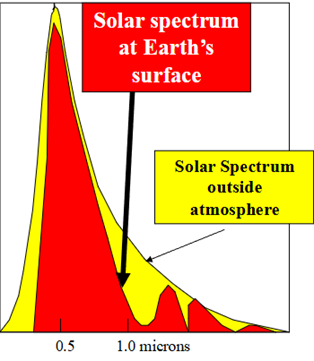
Absorption by the atmoosphere of outgoing terrestrial (long-wave) radiation

SEASONAL VARIATIONS IN SOLAR RADIATION OVER THE EARTH’S SURFACE
As the Earth follows its annual orbit around the Sun, there are changes in the amount of solar radiation received at a given latitude from summer to winter.
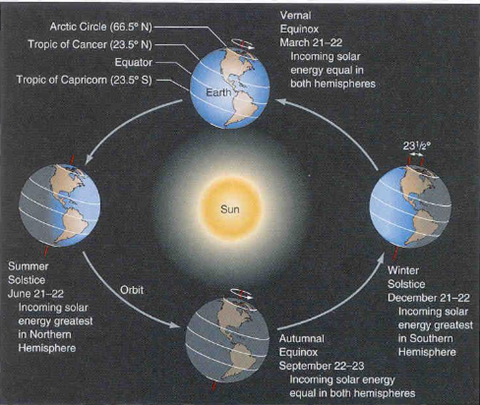
There are seasonal variations in the amount of solar radiation received by the Northern and Southern hemispheres due to the tilt of the Earth (23.5o) relative to “Plane of Elliptic”.
Solstices (longest day/night) ~21 June, 21 Dec
Equinoxes (equal day-night) ~21 Mar, 21 Sept
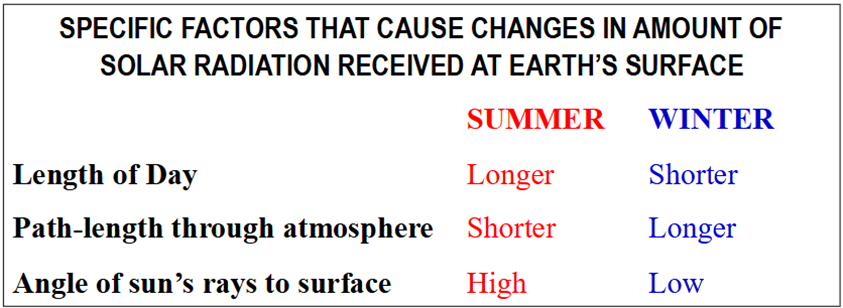


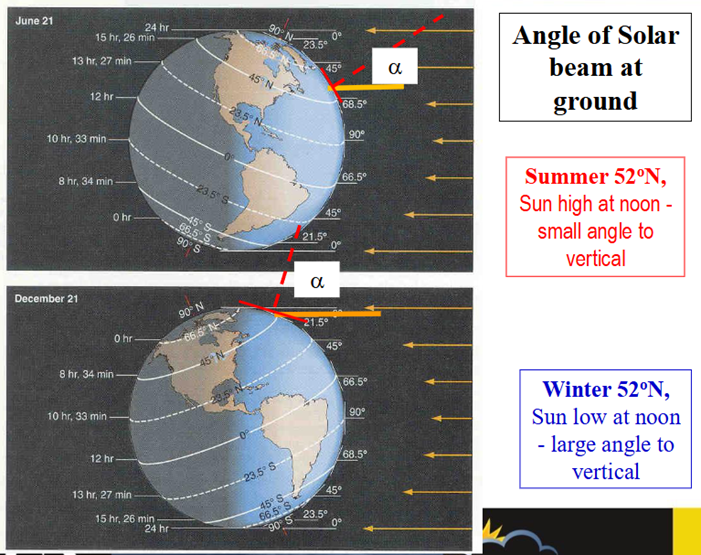
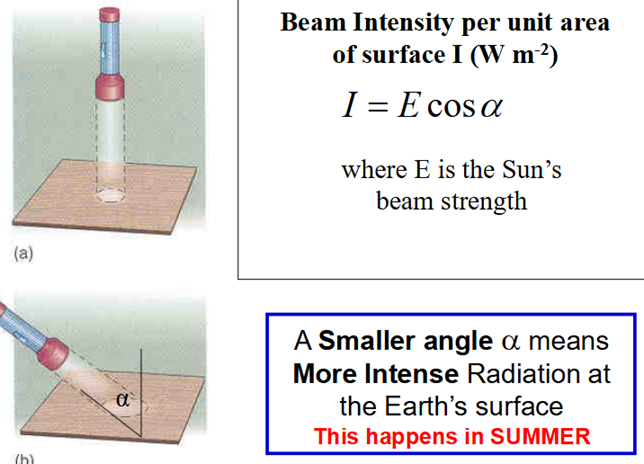
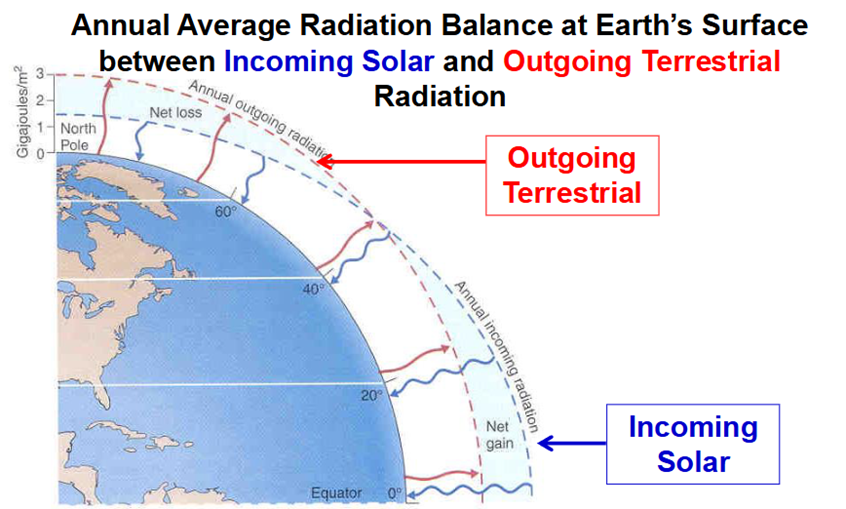
•At Equator incoming exceeds outgoing
•At Poles outgoing exceeds incoming
•Balance at ~40o latitude
The atmosphere and oceans transfer the excess heat energy from Equator to Poles.
This cools the Tropics and warms the Poles.
